6 Steps to Successfully Choose a Process Mining Tool in '24
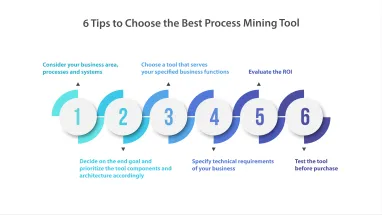
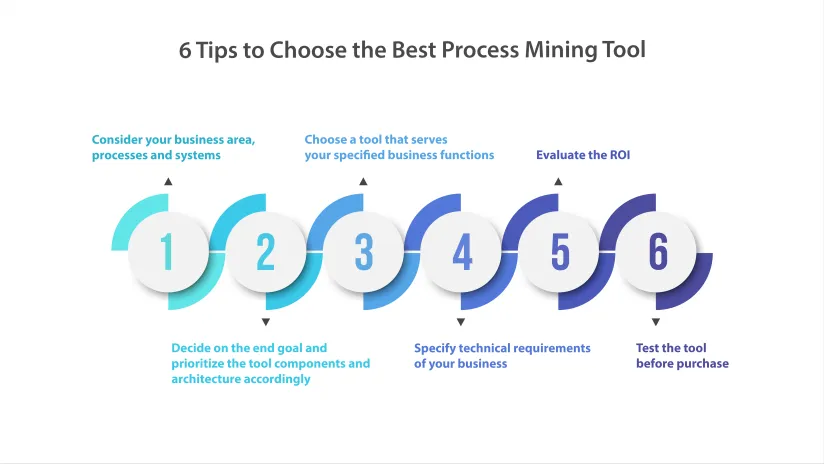
It is estimated that the process mining market size has grown ~70% in a year. While the number of vendors is increasing, vendors highlight different feature sets and focus to stand out in the market. This diversity makes it more difficult for business leaders to select process mining tools that suit their business best.
This article provides six main criteria to help you compare and choose process mining tools.
1. Consider your business area, processes and systems
Before looking for software, businesses are recommended to consider their operations and systems specifically.
Sector and department
Businesses should clarify the specific field they want to apply process mining in (e.g. logistics, banking or insurance). Some vendors have more experience with particular sectors and industries. Therefore, it would be helpful to check out process mining use cases in your current business area. To learn more on process mining use cases, feel free to read our in-depth article where we list 33 use cases of process mining.
Also, process mining applies to line of business functions like procurement, HR, or sales. Business leaders and process mining teams should be specific on the business processes they want to implement process mining.
Systems
Each company has different information and business systems where process mining will capture the data (e.g. ECM, ERP, CRM). Though software provided by top vendors can integrate with most of these systems, businesses should revise process mining software in terms of their integration with these systems.
2. Decide on the end goal and prioritize the tool components and architecture accordingly
Process mining consists of process discovery, conformance analysis, and performance analysis. Many vendors provide all these attributes, but some tools might have distinct specifications appealing for businesses. Companies should decide the attribute they need. Yet, this decision heavily relies on their ultimate goal to achieve via process mining. Depending on the goal of process mining implementation, whether it is to enhance customer service, reduce operational costs, or discover automation opportunities, businesses can leverage different tools which offer features relevant to the implementation purpose.
Process discovery
Process discovery is the first stage where processes are analyzed and visualized. Process discovery can be done manually or automatically. You can learn more about process discovery by reading our comprehensive articles about process discovery and automated process discovery.
Businesses should check if the tools are customized to the standard analyses and components. Another concern is understanding simultaneous analysis and visualization of large amounts of process data. Some process mining vendors leverage process notation or analytics tools to offer customer journey processes and documentation mapping, and detect root causes for deviations and errors in these maps.
If a company aims to understand and optimize its processes or apply process mining to improve its automation projects, process discovery can be enough to implement. In some situations, firms might need to employ conformance analysis or process improvement.
Process conformance
Process conformance analysis enables organizations which have process maps, rules, or ideal process models to compare with their as-is processes. Conformance analysis use cases are mostly in the areas of risk and compliance. In these use cases, processes’ compliance to rules and regulations are evaluated. You can have a better understanding of conformance analysis with our relevant article.
Process improvement
Process improvement component reveals insights on the processes to identify patterns and trends and make recommendations based on these insights. It helps companies track KPIs and identify bottlenecks to increase their performance.
For example, manufacturing and logistics companies benefit from process improvement attributes to detect the slowest and most costly activities or long lead or throughput time. In cases where the organization aims to discover automation opportunities, the organization should revise if the tool’s functionalities can be useful in detecting processes and tasks for automation.
To dive into process improvement, feel free to read our process improvement in-depth guide and case studies.
Additional capabilities
Leading process mining vendors integrate their platforms with different capabilities to help companies achieve their process efficiency. Here are some examples:
Task mining: Task mining or task recording is a technology that leverages computer vision, OCR and NLP to monitor and record user interactions. These interactions can include employee task management on spreadsheets or other activities on web applications that cannot be stored as event log data. Task mining improves process visibility at the task level and ensures task efficiency. Find out more on task mining benefits.
DTOs: The digital twins of an organization are a virtual model of the processes and services illustrating process performance KPIs, process analysis, and process goals and models. DTOs help optimize process flows, develop data-driven strategies, facilitate digital transformation and automation and mitigate risks. For more benefits and applications, check out our article on nine use cases of DTO.
Automation: Recent process mining trends show that more vendors connect process mining with automation platforms to shorten automation project time. With such capabilities, process mining users can take automated actions when they detect improvement opportunities, such as deviations and other inefficiencies. Users can easily implement automation when they discover automation opportunities, such as manual and repetitive tasks to replicate with RPA bots.
The vendor schema below shows which vendors offer these capabilities on their product pages. The schema excludes vendors that have less than 30 employees. The vendors marked with a green square are the ones whose free trials we’ve tested.
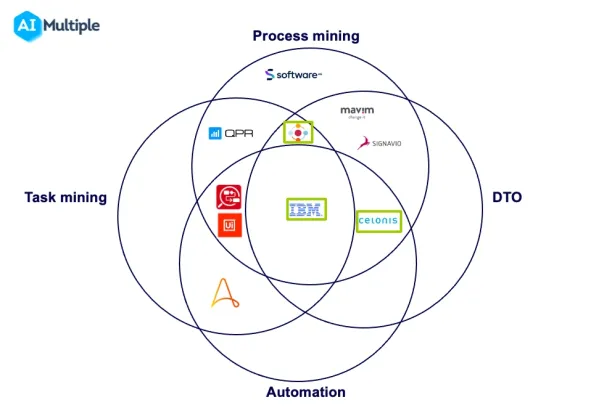
3. Choose a tool that serves your specified business functions
Businesses are expected to be aware of functional capabilities and how these features match their business functions requirements. Based on their data volume, complexity and systems, they can choose the software:
Programming options:
The first thing a process mining team looks for in a tool is the developer and user experience. Process mining teams often include analysts, developers and business users, so the tool should be straightforward and usable by all process mining team users. In the case where there are no current skilled developers on the team, businesses can leverage low code and no code process mining solutions.
Data sources:
The first step of the process mining is the extraction of event log data which refers to the collection of cases with timestamps and activity information. This data can be gathered from various systems. In this step, companies should focus on the:
- volume of data the tool can collect,
- systems from which to import the data (e.g. ECM, ERP).
Some process mining software integrates with other relevant tools (e.g. task mining) to gather data from spreadsheets and documents, or desktop systems, or combine different datasets.
Reporting and monitoring:
Some process mining tools provide integrated reporting features that automatically measure KPI objectives and report the progress to improve processes. Some tools offer live KPI reporting dashboards, as well. Reporting and constant monitoring can be handy for a business that prioritizes continuous error monitoring, anomaly detection, and process improvement.
Operational Support:
More process mining vendors offer predictive analytics to support businesses in predicting maintenance requirements, plausible errors, issues and deviations in process executions. You can find top 3 use cases of predictive process mining here.
Some vendors provide instant notification features in such problematic cases by setting an alert which can reach the designated team member instantly in order to tackle the problem immediately. Feel free to discover how machine learning improves process mining operational capabilities.
4. Specify technical requirements of your business
Organization and IT environment affect a company’s choice of process mining tools since each tool differ in architecture, performance, and security.
Deployment options
Process mining vendors can have different deployment options such as cloud, hybrid or on-premises, while some leading vendors can be flexible and provide them with all. Deploying process mining on cloud and on-premise impose different challenges and benefits.
Usually, on-premise deployment requires the installation and IT systems integration to extract data. If your business is unwilling to install, then on-cloud deployment can be a better option. However, on-cloud deployment can increase data privacy risks, so you should check the data security protocols of the vendor before finalizing the decision. You can learn more on the differences between these two options by reading our article on process mining as a service.
Performance limitations
Process mining tools generally support multiple user access and handle large data sets. However, it can affect their speed in the analysis, so it is always good to check the limitations of the tools.
Authorization capabilities
Some tools define and customize user roles and authorities. For example, a tool can have users defined as analyst, viewer and engineer based on organization policies, employee experience, projects and capabilities with the tool. If your process mining team needs such customization you might need to pay attention to user roles features in the tool. Another point is to understand how data access permissions are handled to ensure the data privacy and protection.
5. Evaluate the ROI
Check the cost of software and your budget
Businesses should be clear about the maximum cost of their investment concerning their allocated budget. Process mining helps organizations save money by decreasing the expenditure incurred due to process errors. However, there is a cost to implement process mining.
Analyze the market
There are various vendors with different price models for their services in the market. Businesses need to conduct market research and understand the market standards, common features, leading vendors, product prices, case studies and experience of vendors. Benefit from our data-driven list of process mining vendors where we have a comprehensive overview of process mining vendors, features, maturity, and popularity.
Measure the price-to-performance ratio
You should downsize this long vendor list into a selected shortlist with a maximum of three candidates. Then, you can test the free trial or search for reliable case studies relevant to your industry and business functions, which can be real-life examples. Once you learn their overall performance, case studies, scalability, and prices, you can evaluate the price and performance ratio and decide accordingly.
See if you need a consultant
If a business is implementing process mining for the first time and it lacks employees with working knowledge on the domain, the company will probably end up with receiving help from a consultant. The consultancy service increases the cost of implementing process mining. If you want to benefit from a consultant, you can read our guidance on how to choose a process mining consultant.
Train your team
Another challenge on implementation cost is the cost of human resources. Your company will need a team to work on process mining and use the tools. If the company does not have employees who can help with the tools, the firm needs to consider training their team
6. Test the tool before purchase
Businesses need to test the process mining tools to understand their technical and functional features. Many process mining vendors provide free demos upon request to their potential customers, while some of these vendors offer free trial opportunities for a given period. The free trial allows businesses to evaluate the tools’ viability and practicality for their teams.
We have also prepared a checklist in Google sheets with recommended weights per criteria so you can have a transparent methodology to assess different vendors. Feel free to get it on your business email:
Further Reading
If you want to learn more on process mining software or process discovery tools alone, you can read our relevant articles.
- Top 10 Open Source and Free Trial Process Mining Tools
- Top 22 Automated Process Discovery Tools in 2022
If you want to deploy process mining, you can start checking our data-driven list of software.
Check out comprehensive and constantly updated list of process mining case studies from various vendors to identify best process mining tool for your business.
And if you think you need more guidance to find the best tools, we can help you to find the right vendor.

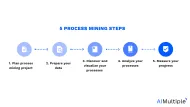
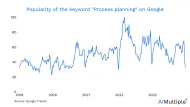
Comments
Your email address will not be published. All fields are required.